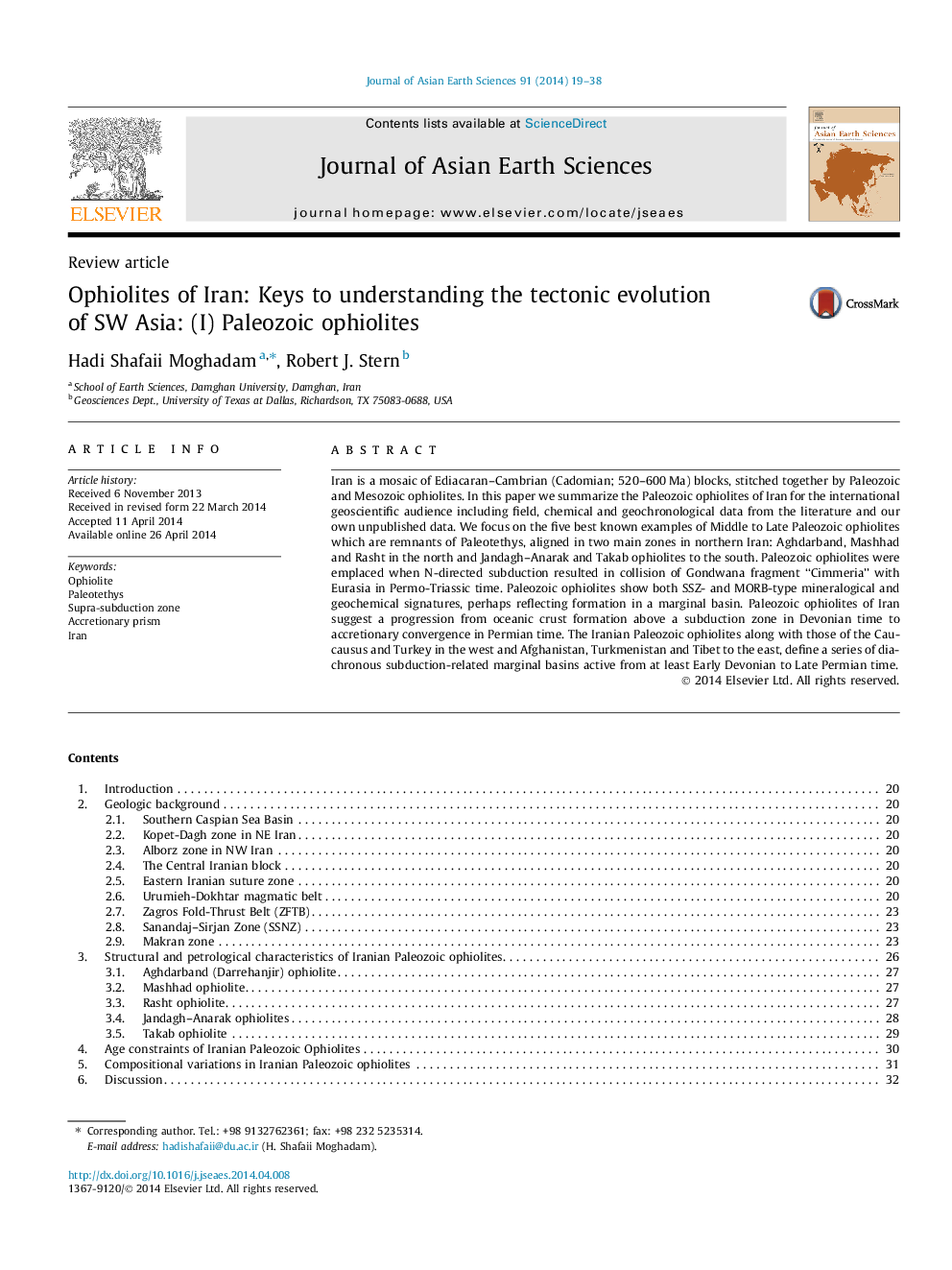| کد مقاله | کد نشریه | سال انتشار | مقاله انگلیسی | نسخه تمام متن |
|---|---|---|---|---|
| 4730546 | 1640377 | 2014 | 20 صفحه PDF | دانلود رایگان |

• Iranian Paleozoic ophiolites are remnants of Paleotethys.
• Paleozoic ophiolites show both SSZ- and MORB-type geochemical signatures.
• Paleozoic ophiolites are diachronous subduction-related marginal basins.
Iran is a mosaic of Ediacaran–Cambrian (Cadomian; 520–600 Ma) blocks, stitched together by Paleozoic and Mesozoic ophiolites. In this paper we summarize the Paleozoic ophiolites of Iran for the international geoscientific audience including field, chemical and geochronological data from the literature and our own unpublished data. We focus on the five best known examples of Middle to Late Paleozoic ophiolites which are remnants of Paleotethys, aligned in two main zones in northern Iran: Aghdarband, Mashhad and Rasht in the north and Jandagh–Anarak and Takab ophiolites to the south. Paleozoic ophiolites were emplaced when N-directed subduction resulted in collision of Gondwana fragment “Cimmeria” with Eurasia in Permo-Triassic time. Paleozoic ophiolites show both SSZ- and MORB-type mineralogical and geochemical signatures, perhaps reflecting formation in a marginal basin. Paleozoic ophiolites of Iran suggest a progression from oceanic crust formation above a subduction zone in Devonian time to accretionary convergence in Permian time. The Iranian Paleozoic ophiolites along with those of the Caucausus and Turkey in the west and Afghanistan, Turkmenistan and Tibet to the east, define a series of diachronous subduction-related marginal basins active from at least Early Devonian to Late Permian time.
Journal: Journal of Asian Earth Sciences - Volume 91, September 2014, Pages 19–38